The 2022/23 season was a historic one for Monza before it even began. After a fantastic Serie B campaign last season, I Biancorossi were set to play in the Serie A for the first time in the club’s history. The road to the top was far from easy though, and before Silvio Berlusconi’s takeover in 2018, the Lombardy club were declared bankrupt twice, first in 2004 and then again in 2015.
Ahead of their first season in the topflight, Berlusconi made an unbelievable 23 signings in the transfer window, with some notable players such as Juventus duo Nicolò Rovella and Filippo Ranocchia as well as Inter’s Stefano Sensi all joining on loan. With such a drastic change in personnel, former manager Giovanni Stroppa would need some time to adjust and develop the team. However, after just one point in their first six matches, Berlusconi decided it was time to change it up.
The answer was 38-year-old Raffaele Palladino, a retired winger who played his entire professional career in Italy. The appointment came as a shock to everyone. Raffaele had no senior managerial experience, with only two seasons of experience managing Monza’s youth sides.
The experiment did not take long to prove successful, as Palladino beat a then-undefeated Juventus side 1-0 just days after his appointment. Two months later, the Italian manager has won six of his first 10 matches as Monza sit comfortably in 14th place, only five points from the top half of the table. The underlying metrics, however, demonstrate an incredible improvement in performance.
In his first press conference as Monza’s manager, Raffaele Palladino mentioned the importance of lifting the mood at the Stadio Brianteo and playing with “heart and soul”. Tactically, he cited Atalanta boss Gian Piero Gasperini as his biggest influence. It did not take long for the similarities to develop, and after only a few months in charge, Palladino has Monza playing some of the most exciting football in Italy.
This tactical analysis will provide an in-depth look at Raffaele Palladino’s tactics and playing style at Monza. Palladino has completely changed Monza’s performances after a six-game winless start to the league, and this analysis will examine what makes Palladino’s side so exciting.
Formations
In their first six matches, Giovanni Stroppa had been strictly using a 3-5-2. It was clear the Biancorossi wanted to play positive football in their first Serie A season, especially with the heavy investment. However, Stroppa’s side was heavily ineffective. They averaged 0.50 goals per 90 from 1.00 xG per 90, while defensively, they conceded 2.33 goals per 90 from 2.11 xGA. These were extremely worrying numbers, and it was clear something had to change.
Palladino immediately resorted to a 3-4-2-1, a formation which provides extreme balance in all areas of the pitch. Without much time to prepare, this seemed like the ideal choice for the 38-year-old. It instantly proved successful, and after a few matches, Monza had finally turned positive football into effective football.
Under Palladino, Monza are scoring 1.44 goals per 90 from 1.43 xG per 90. The defensive security Palladino has introduced is even more impressive. They are now conceding only 0.89 goals per 90 from 1.01 xG, less than a goal per game.
The structure which Raffaele has resorted to is a big factor behind their success, and it is key to the way they play. The natural characteristics of some players have caused this to look like a 3-4-3 or a 3-4-1-2 at times, but the 3-4-2-1 is always at the core of their organisation. This structure can be seen in one of their pass maps below.
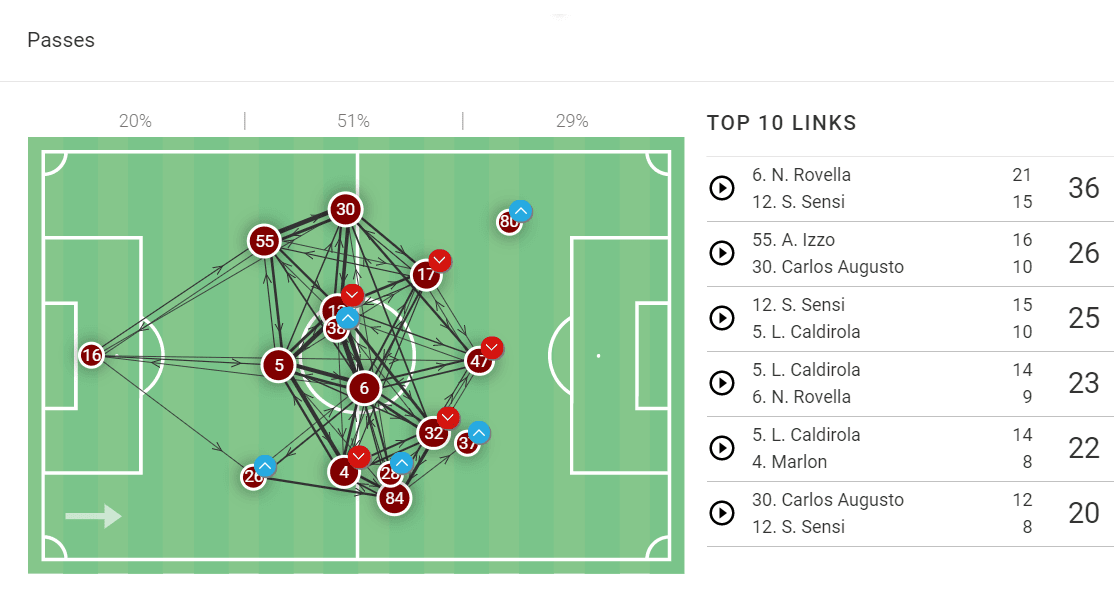
The three centre-backs are at the base of their structure in possession, and Palladino has yet to repeat a centre-back trio in back-to-back games. Monza have multiple options at the back, and the Italian manager is trying everyone out. On the left, Carlos Augusto has been the left wing-back. Patrick Ciurria has been the biggest surprise though, with the former centre-forward now playing as a right wing-back under Palladino.
In the middle, the double pivot is usually formed by Sensi and Rovella, but there are many alternatives. Ahead of them, Matteo Pessina and Gianluca Caprari form an attacking midfield duo, but again, there are multiple options in Monza’s squad. Up top, 24-year-old Dany Mota is the go-to option.
As with any new manager, Raffaele Palladino has been testing out his squad. However, as the weeks go by, his favourite XI is starting to become clearer.
Earlier phases of possession
When looking at Monza’s pass map under their new manager, it is clear they like to build out of the back. In fact, their work in the first few phases of possession is crucial to how they play. The bulk of their passes are concentrated in their own half, and as they progress forward, they become much more direct. This can all be illustrated in their pass map below.
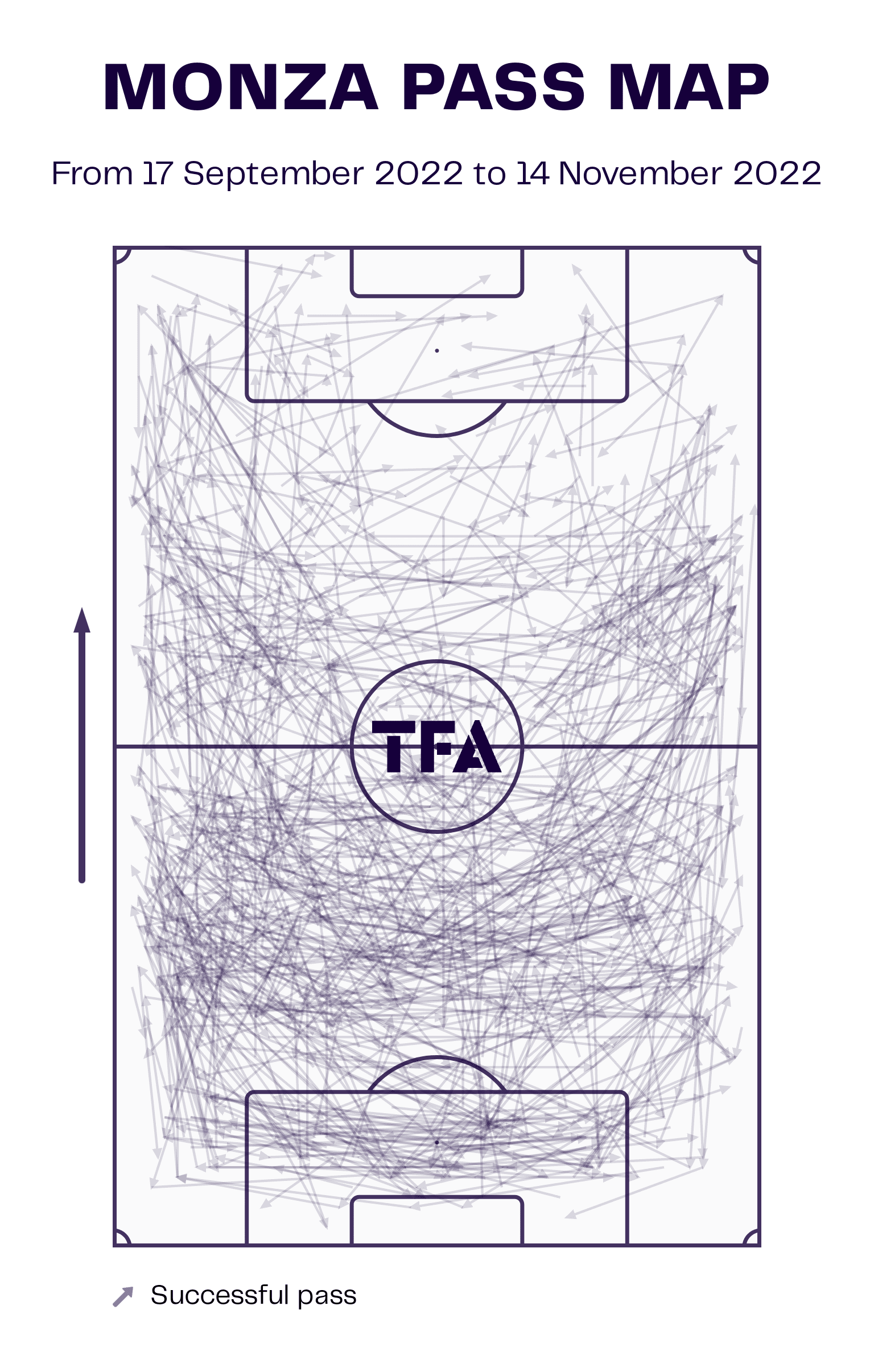
Their build-up begins in their usual 3-4-2-1 structure, with the three centre-backs expanding the pitch while the wing-backs maintain width. However, this shape is far from rigid. In possession, Palladino’s side are extremely fluid, with positional rotations being a key part of their effectiveness with the ball. Again, their 3-4-2-1 allows for such rotations to become much more smooth and balanced.
An example of this can be found below. As the wing-back pushes higher, the left CM shifts all the way wide. Meanwhile, the advanced midfielder provides support alongside the opposite CM.
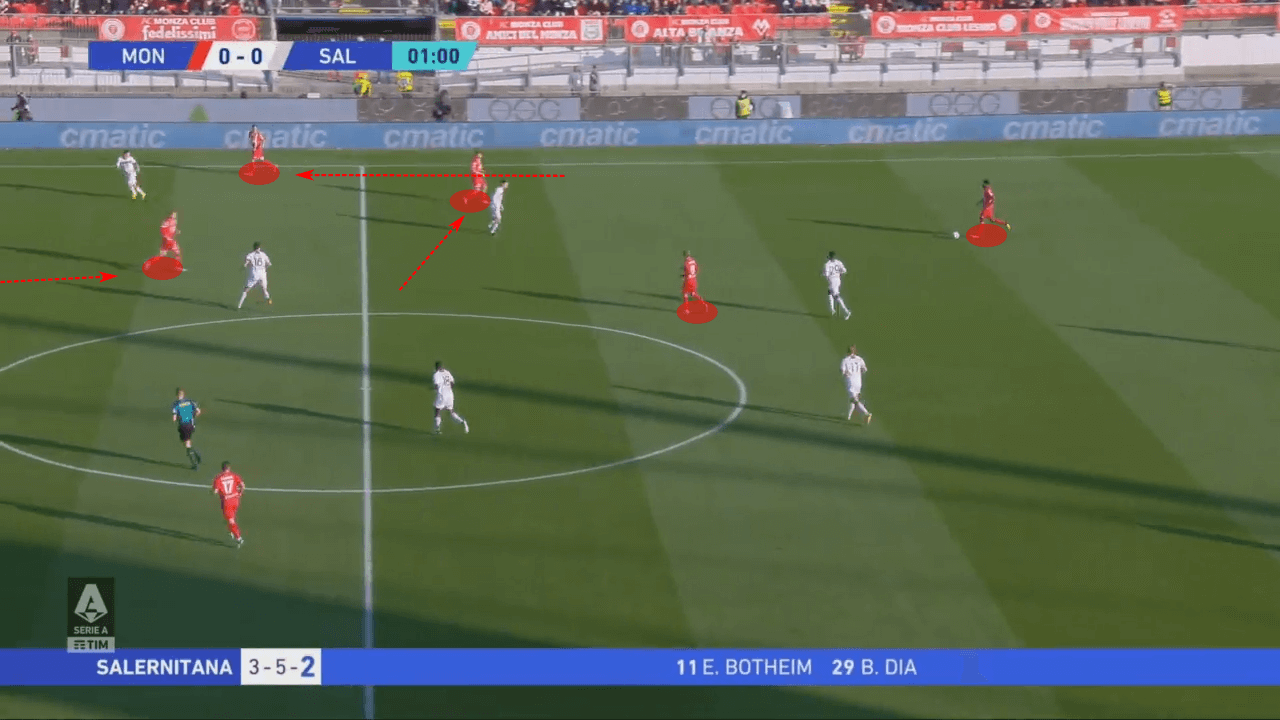
In the first phase of possession, Palladino likes an expansive build-up structure. Stretching the opposition’s high press is key to creating space to progress forward. This is originally done in their formation, but as rotations began to take place, it can be maintained through multiple ways. In the instance below, the right CM, Rovella, shifts all the way wide as a wing-back. This drags Salernitana’s player and creates space inside for the right centre-back to carry into.
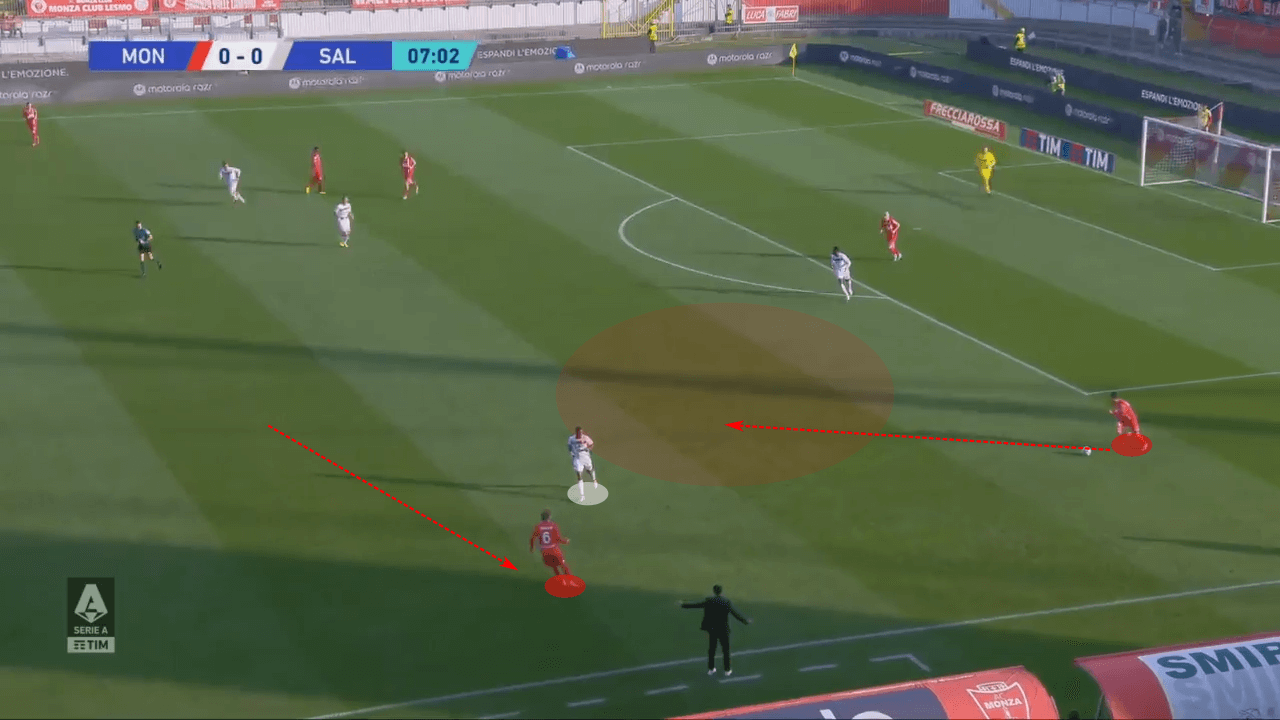
Carries are heavily encouraged by the 38-year-old manager. The map below, from the period he has been in charge, further illustrates this. More specifically, the map on the right side illustrates how often they perform carries in the earlier stages of possession.
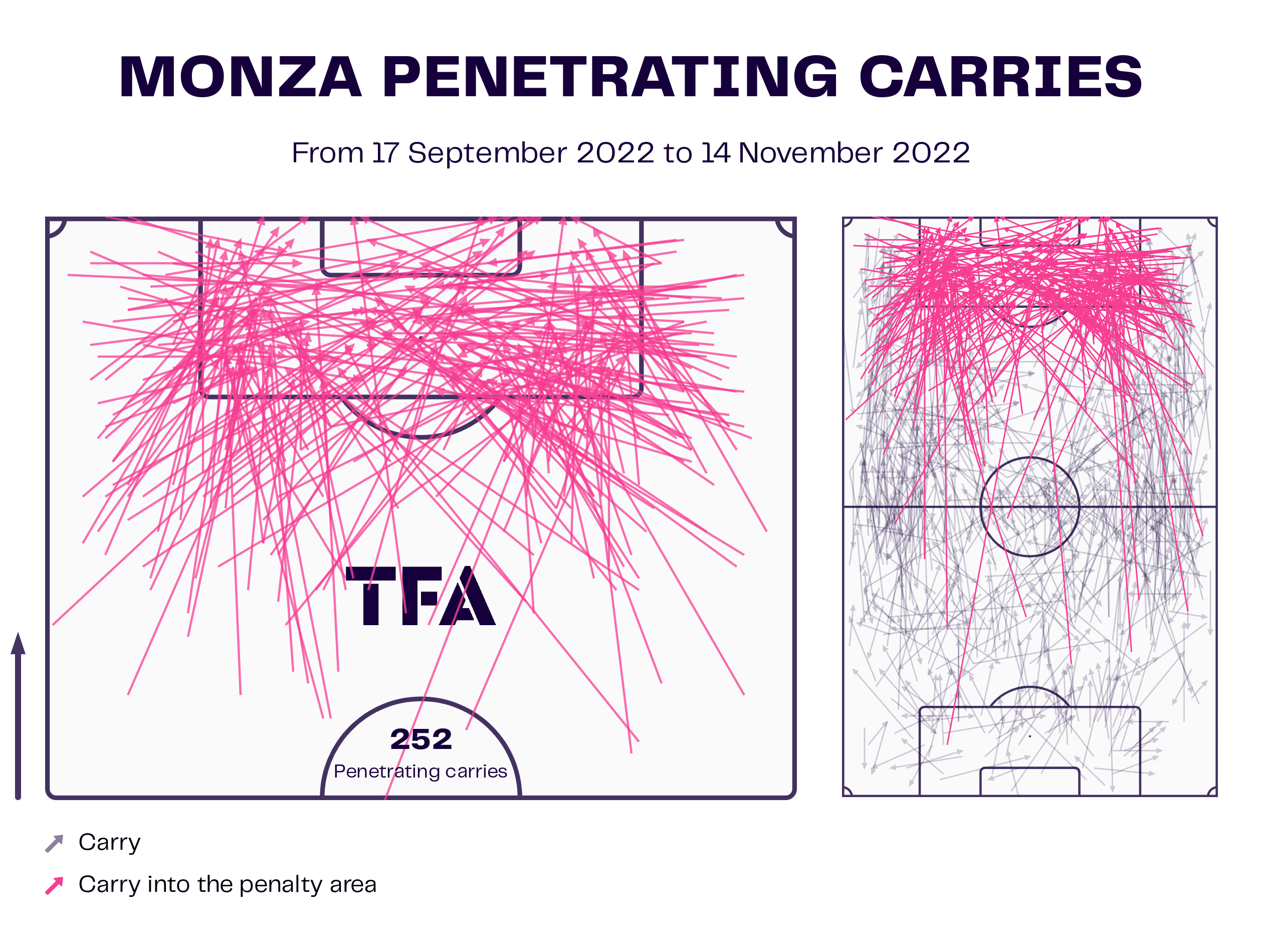
Finally, in the segment below, we can identify the overall objective of their build-up. With their build-up, they aim to attract the opposition’s defensive structure deep into their half. As soon as space opens up, they burst forward with extreme speed and verticality.
Below, Armando Izzo finds Gianluca Caprari, who is checking in from higher up the pitch. This passing lane is only available due to their expansive structure, which stretched Salernitana’s defensive organisations.
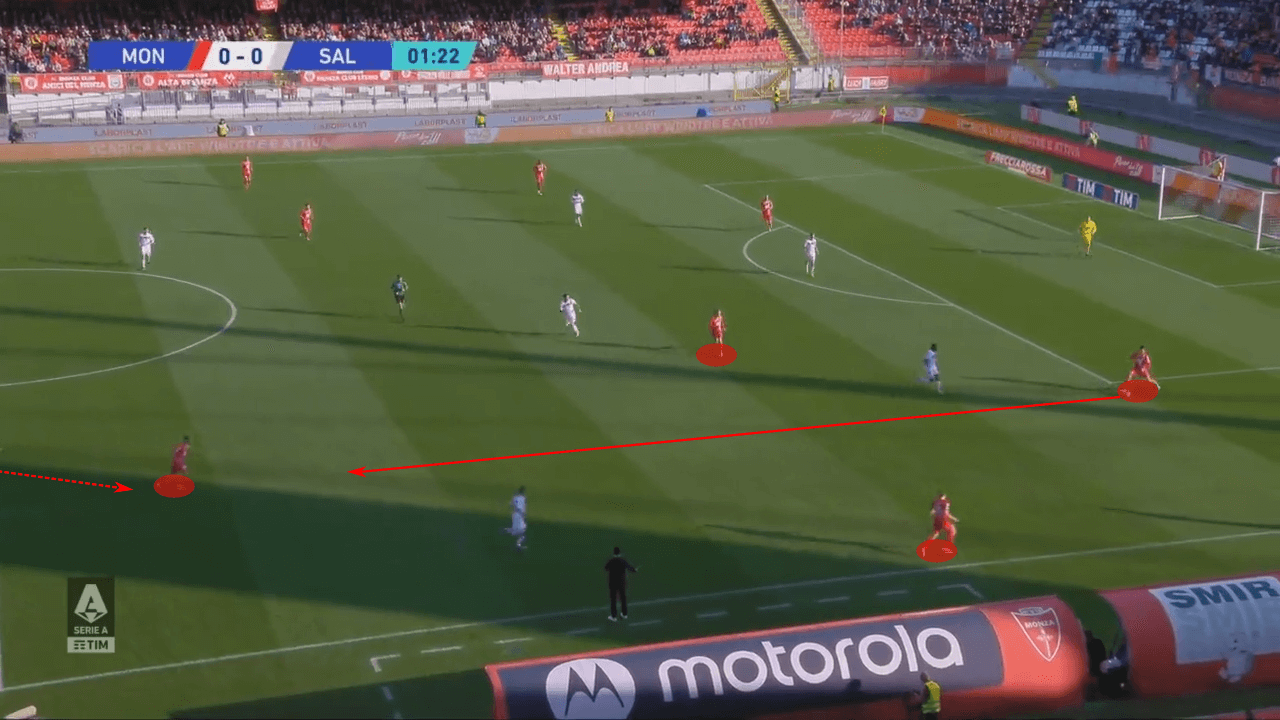
After Caprari receives it, he lays off Rovella, the central midfielder. As this is going on, Carlos Augusto, the wing-back, performs a beautiful underlapping run to become the extra man and overwhelm Salernitana’s backline. Rovella finds the centre-forward Dany Mota, who checks in to receive the ball. Monza begin with a patient side-to-side build-up, but once space is found, they burst forward with speed and numbers.
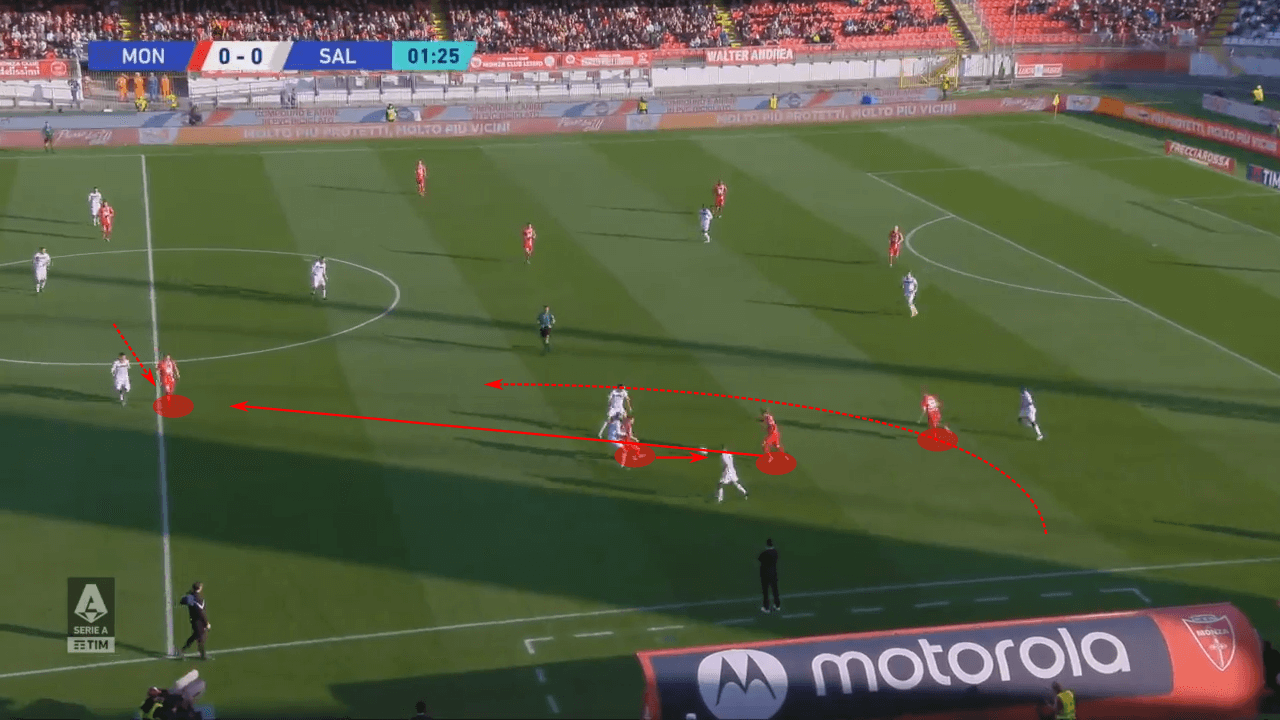
Dany Mota has also been crucial in these phases. The Portuguese centre-forward is very comfortable with dropping deep and participating in possession. With two advanced midfielders in front of him, he is able to take advantage of holes in the midfield created by them. His touch map below highlights how involved he gets in earlier phases.
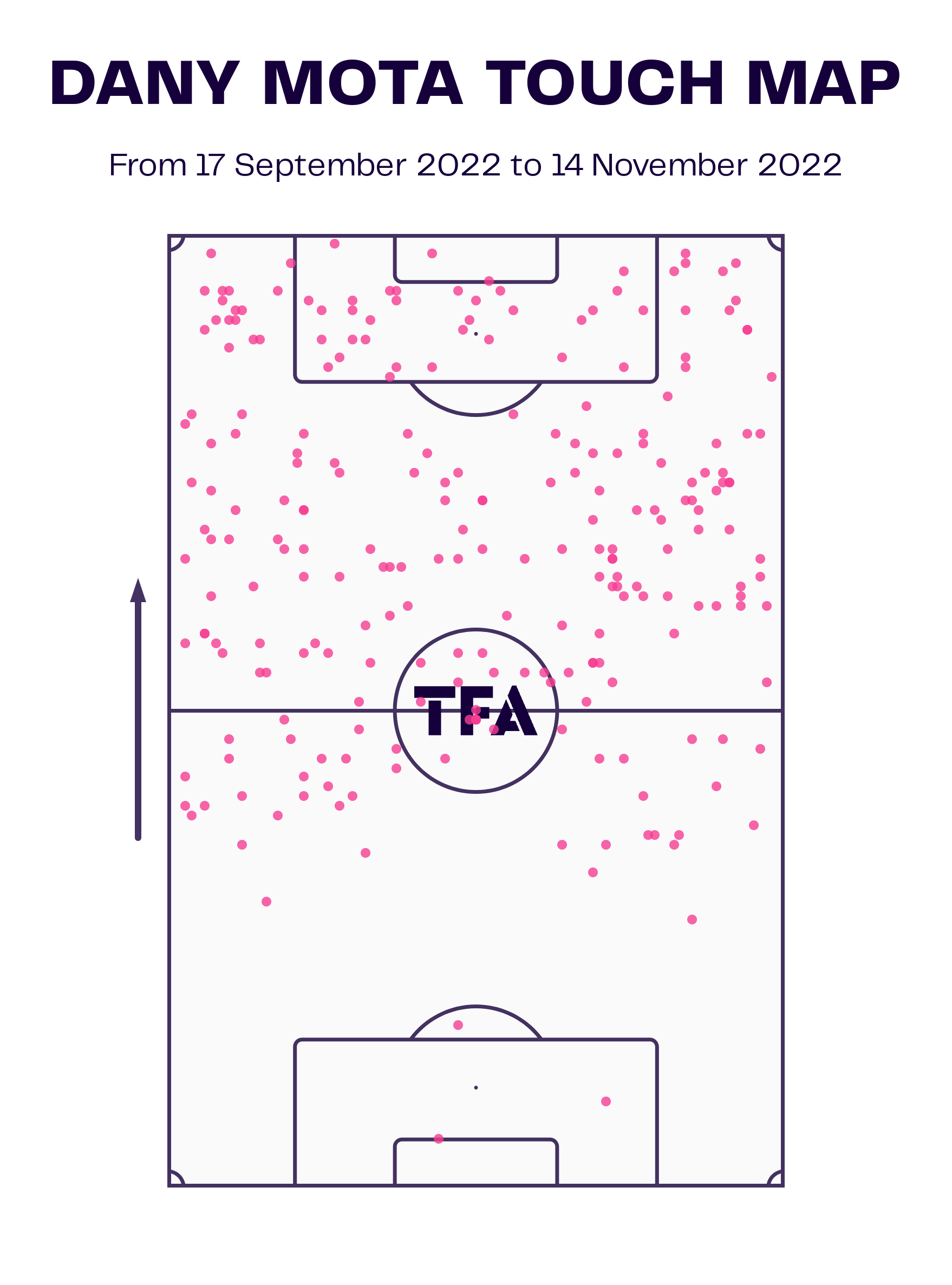
Wide focus
Further up the pitch, Palladino’s possession is very wing oriented. Similar to Gasperini’s Atalanta a few years back, his 3-4-2-1 provides extreme balance to create wide overloads and progress through the half-spaces and wide channels. This wing approach has a few cornerstone principles which make it so effective, as we will examine later. Nonetheless, the formation is perhaps the biggest factor behind its success.
First, we can use the heatmap to illustrate their areas of focus in possession. Despite having four midfielders, they are concentrated in wide areas. Additionally, they are much more active in the earlier zones, where they retain possession patiently before going direct.
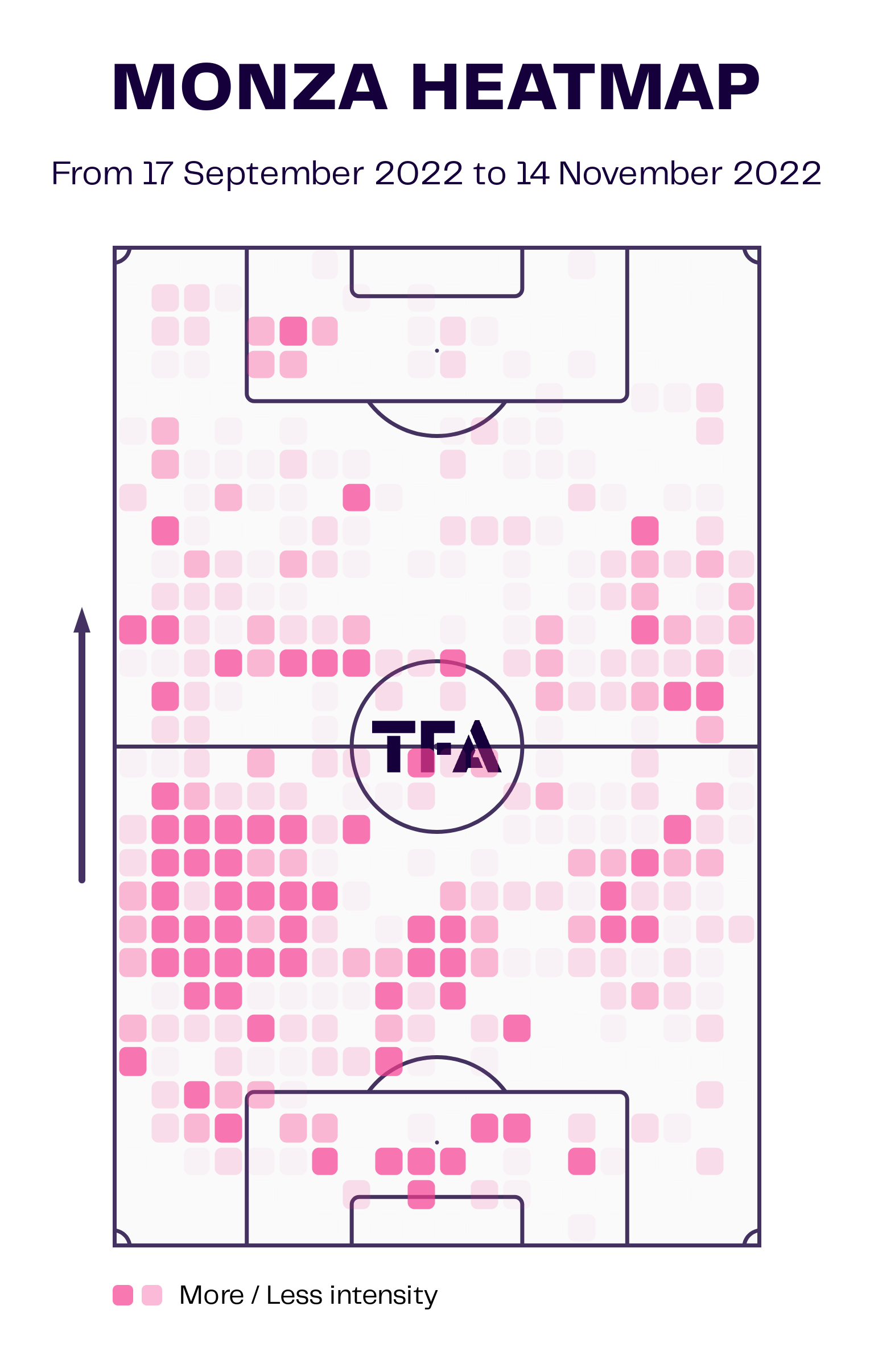
In positional attacks, Palladino’s side do not really care for maintaining a perfectly symmetrical structure. Both central midfielders will usually support the same wide area along with the nearest advanced midfielder. This usually creates wide overloads, with five players joining that area.
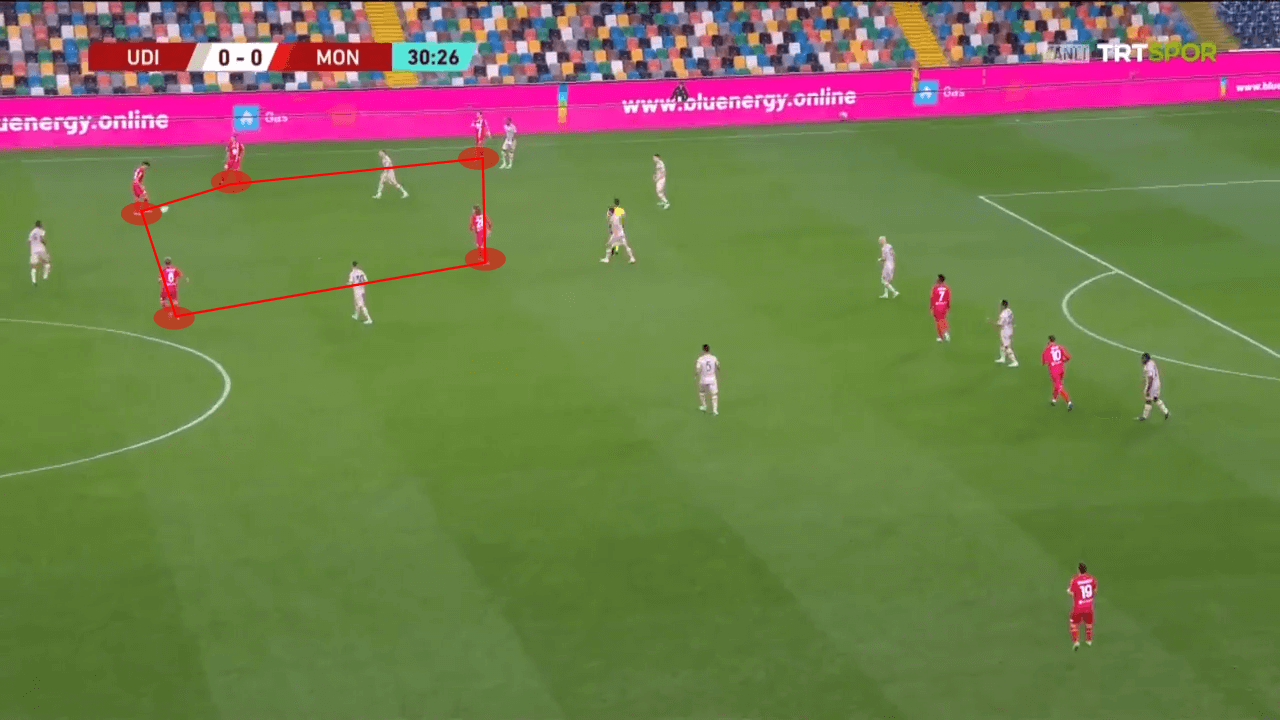
In these scenarios, they can use their positional fluidity and dynamic movement off the ball to progress. Through constant rotations, they are able to disorganise the opposition and create passing lanes, whether they have numerical superiority or not. On the contrary, the superiority tends to be tactical and socio-affective, especially as they get more used to playing with each other. In the instance below, they can use such principles to progress through Udinese’s entire block.
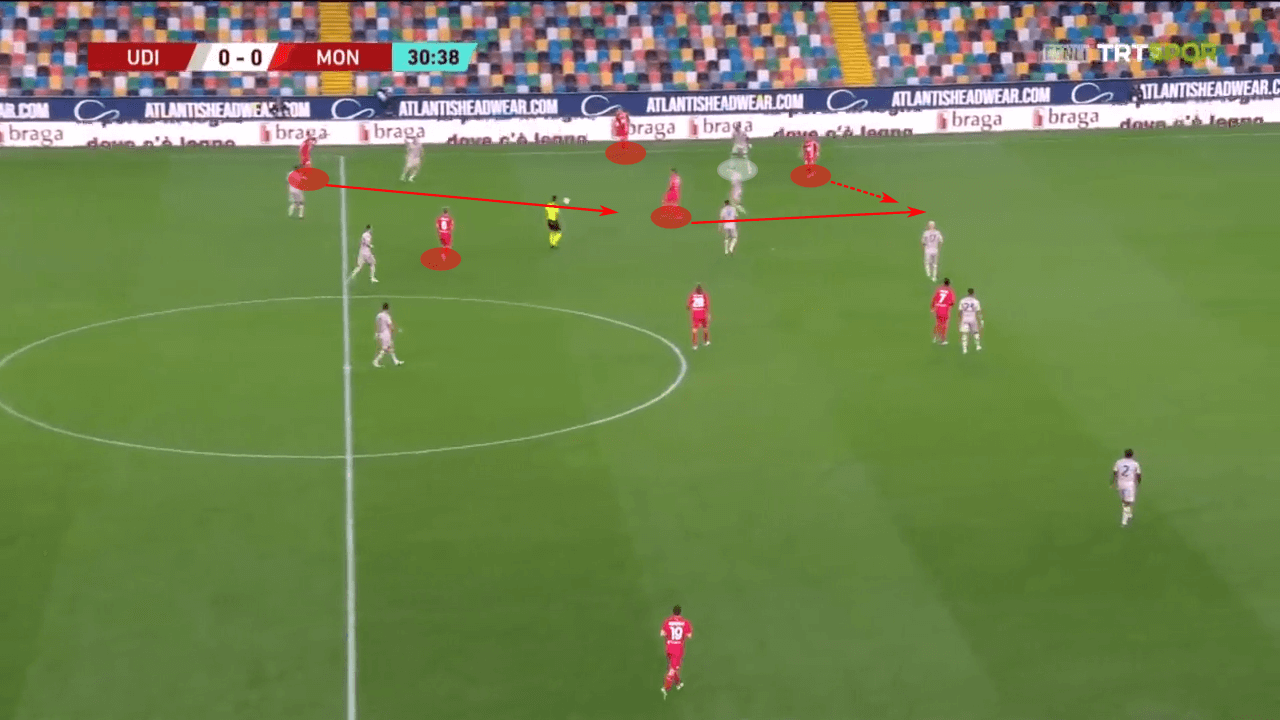
This positional freedom often allows them to overload the opposition and create optimal passing options. In the instance below, Rovella roams forward from his natural position to find space between Udinese’s defensive lines. The instinctive nature of these movements makes them extremely hard to predict and defend.
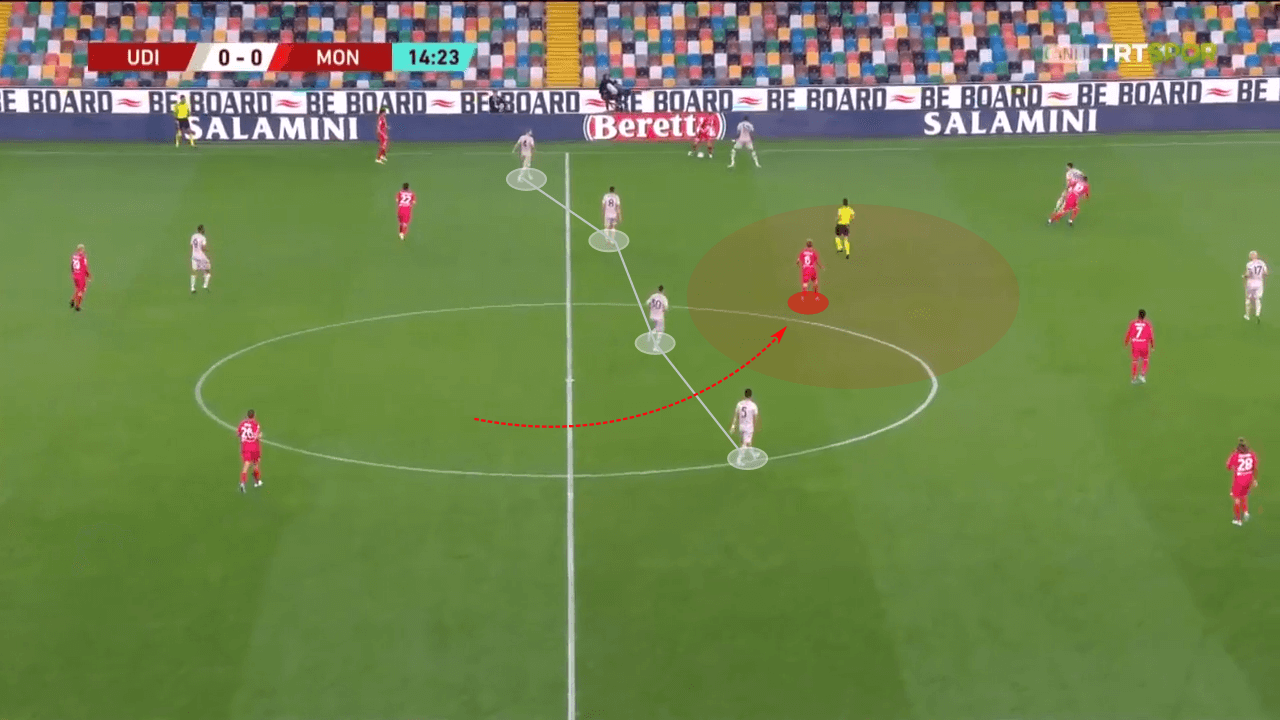
Finally, we can see another example of their wide dynamics, now in the final third. With similar positional movements, they create a 3v4 in the wide channel. Ranocchia attacks the backline and creates a 2v1 against Udinese’s defender. He can receive the ball and attack the opposition’s box.
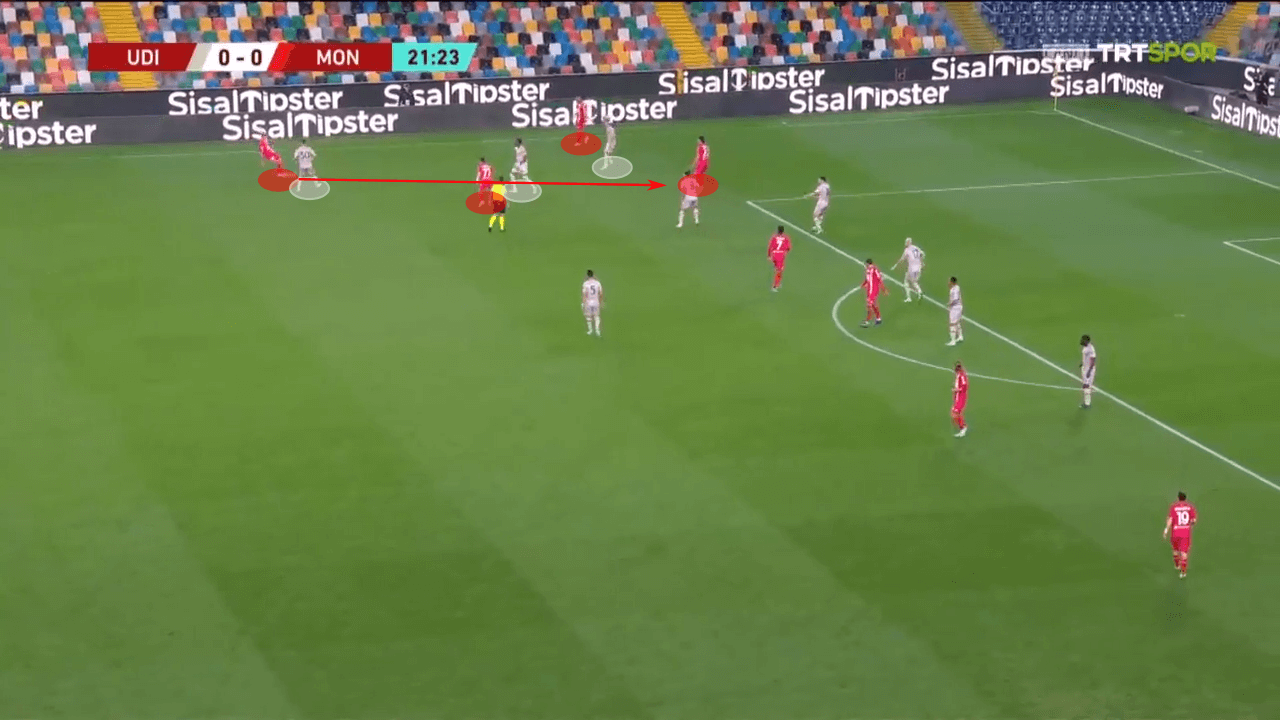
Defensive system
While Monza’s attacking performances have been extremely exciting, especially in style, the defensive security Raffaele has introduced is superb. As mentioned, the Lombardy side has gone from conceding 2.33 goals per 90 to just 0.89. While their increase in possession has played a part in this, they have undoubtedly been more secure without the ball.
Their high regains map below further illustrates this. They are not necessarily an extremely high-pressing side, but they are still able to recover the ball high quite in often. Since Palladino has been in charge, they have had 81 high regains and 124 counter-pressing recoveries. Of these, 23 have led to a shot in 20 seconds or less.
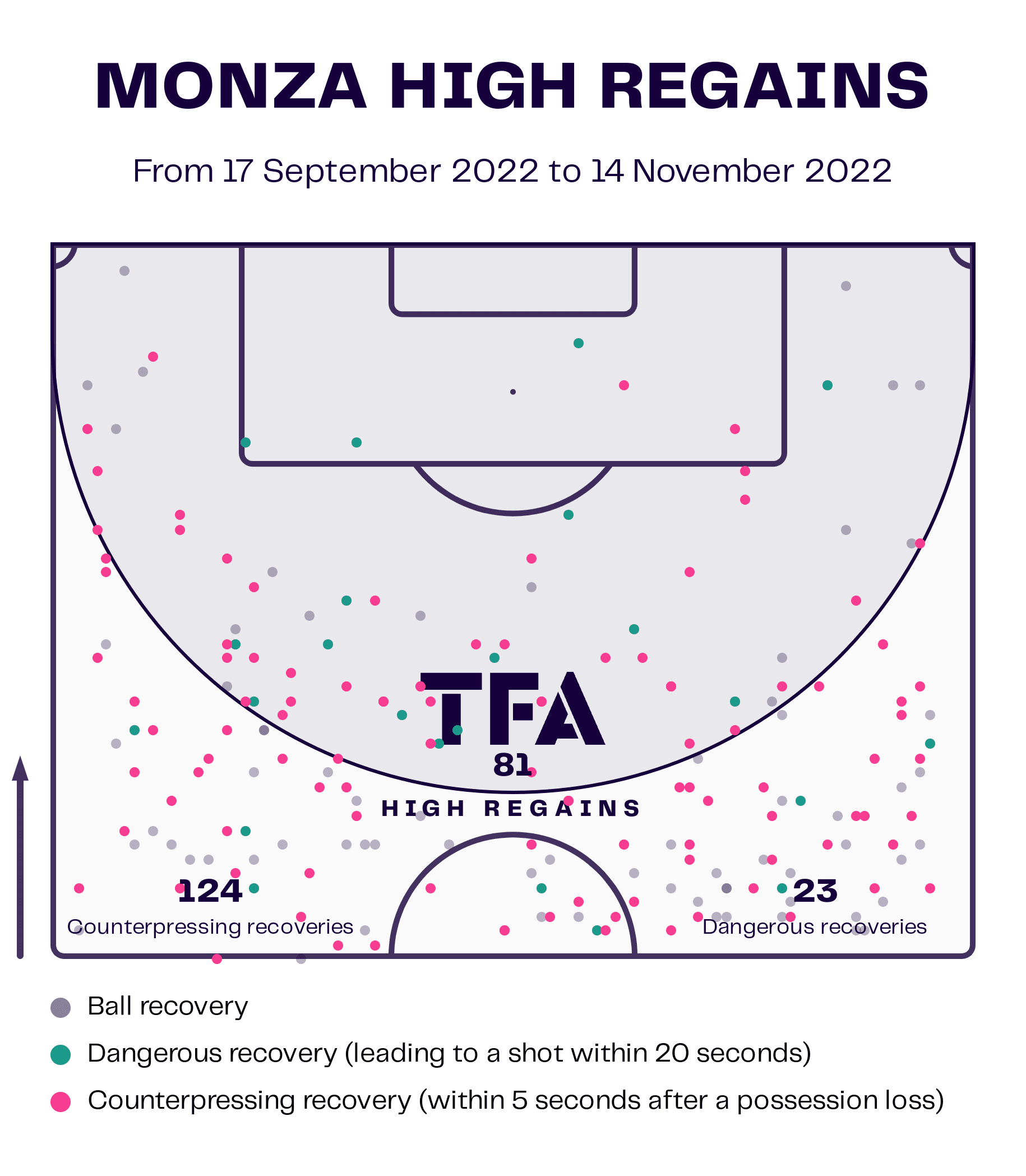
Their defensive strategy can be highlighted by their defensive territory below. The majority of their defensive actions are concentrated in the half-spaces and wing channels. They like to force the opposition wide and overwhelm them against the touchline. Additionally, the defensive territory does not begin extremely high, highlighting their inclination towards a mid-to-high block instead.
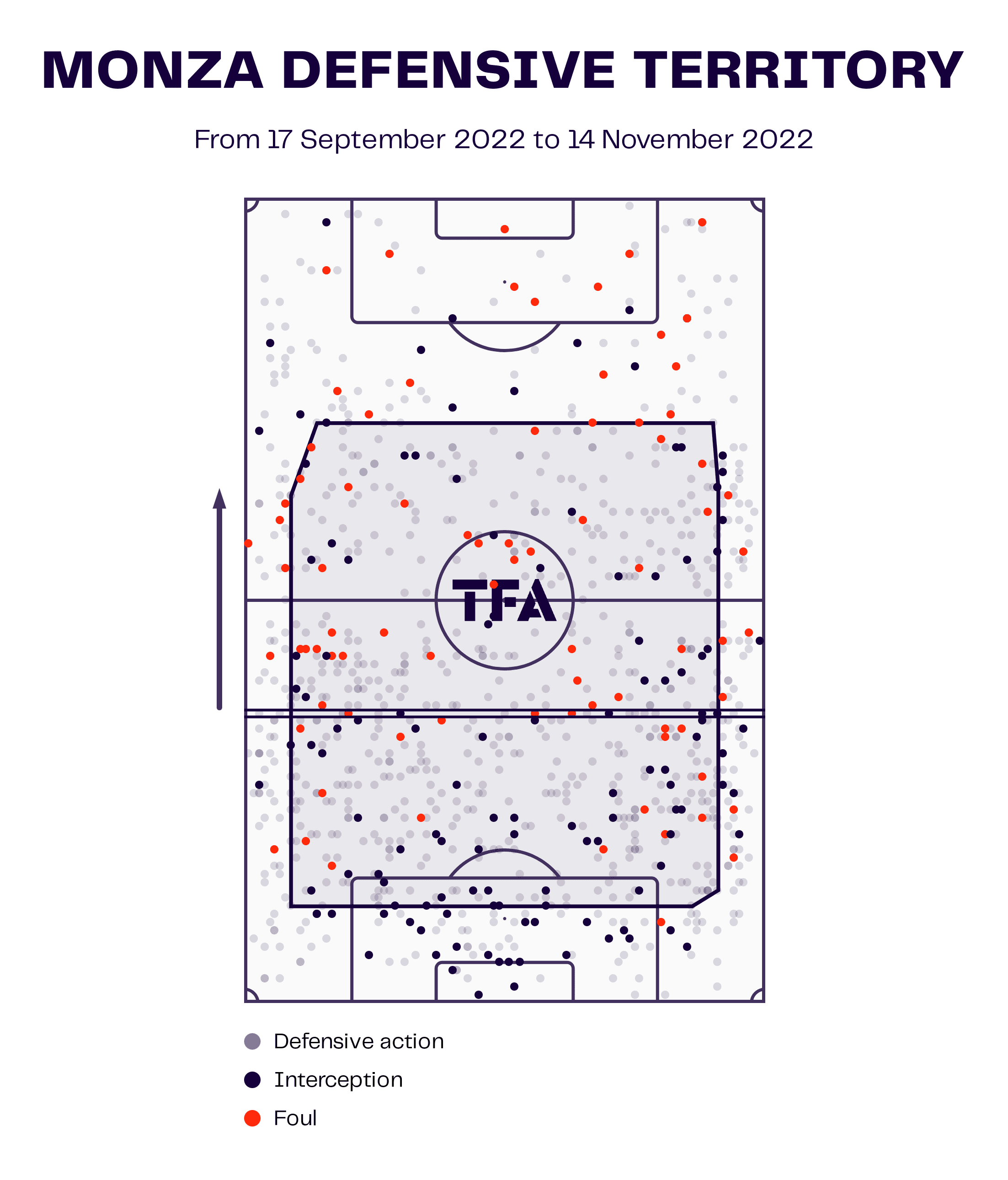
Their defensive organisation usually begins in a mid-to-high block, and this structure does not really have a set shape. They are fluid in their defensive behaviour and positioning, being very man-oriented. Nonetheless, they begin in their 3-4-2-1, with a box shape in the midfield and either wing-back pushing up high.
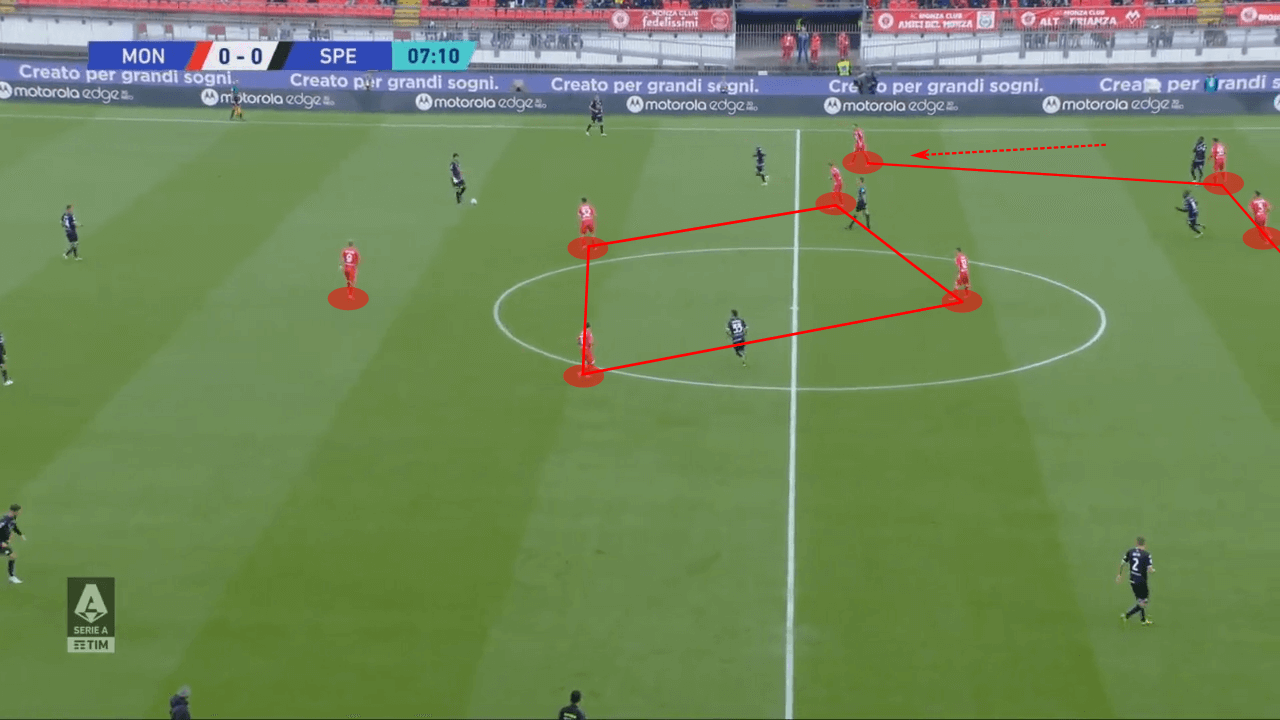
The midfield works in pairs to press either side. This way they can remain balanced and quickly get to either side. In the instance below, the double pivot shifts to the left side as Rovella jumps on Salernitana’s player. Pessina tucks in and picks up the nearest midfielder. On the opposite side, the advanced duo pick up the remaining players.
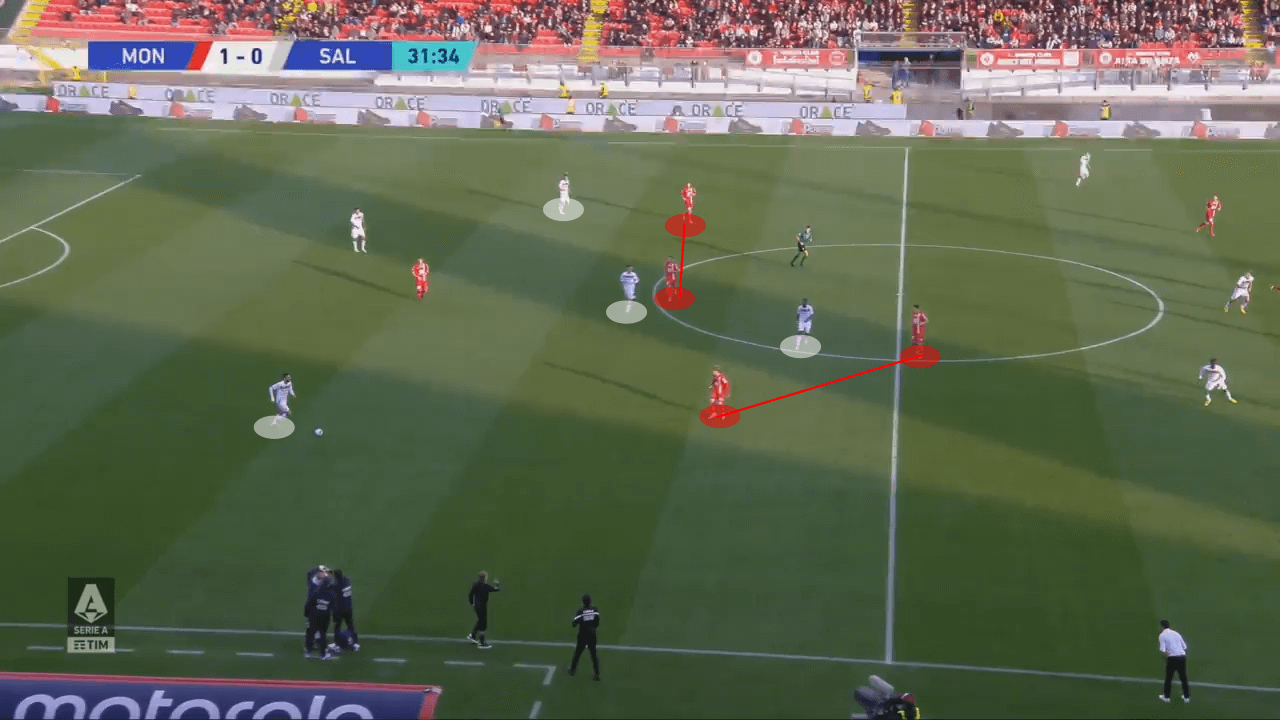
In another instance, the same happens with the other midfield line. This time, the advanced midfield duo jumps to press the two players on the left side while the double pivot picks up two players on the far side.
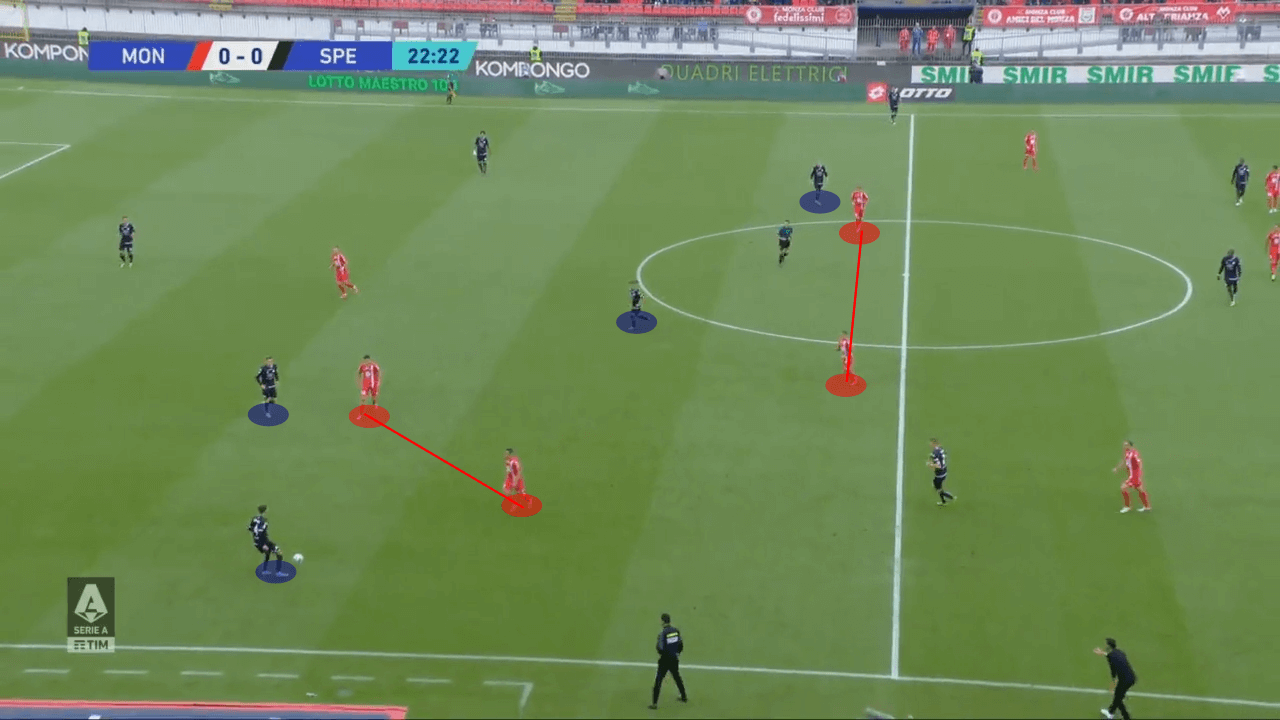
Finally, rather than maintaining a set shape and adopting a zonal system, they are rather man-oriented. In the example below, Sensi ends up pushing up and pressuring Milan’s centre-back while Luca Caldirola, the wide centre-back, jumps on Milan’s fullback. Carlos Augusto, the wing-back, comes inside with his man. They are constantly rotating positions and changing their structure in a man-marking system.
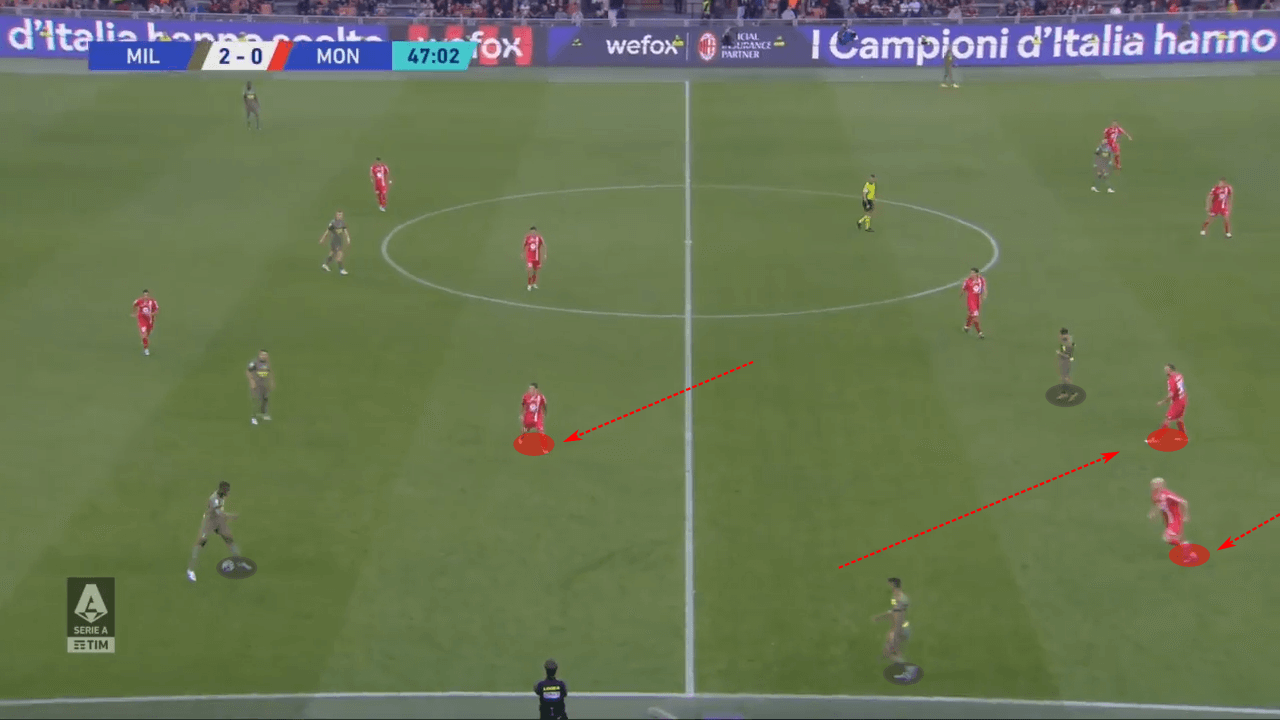
Conclusion
The start of Raffaele Palladino’s managerial career has been extremely promising, and all eyes will be on Monza and the rest of their season. After a disastrous start to the league, Palladino has been able to come in and restore success with his exciting tactics. While his tactics are certainly interesting in style, they are extremely effective as well. It will now be interesting to see if they prove sustainable. Nonetheless, Palladino’s managerial career is off to a fantastic start.





Comments